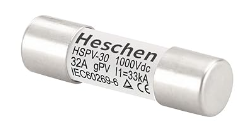Daddy Tanuki
Solar Wizard
I have spare class t fuses that are 80 amps I can send for testing if you need fuses
I think the NH00 fuses are also designed to not throw molten metal around. Same principal of an enclosed ceramic fuse surround with silica sand.I wish I had more time. I have all the equipment to do these tests in my lab (I've done Class T and BS88 in the past for example).
As for the BMS (I tested the JK): in many cases and faults it will be much faster to react than the fuse, but it's not the only thing I would rely on. I size my fuses based on the max current it should see in normal operation. Inverters can fail and create a dead short, but if they normally only draw 100A, a 125A fuse will do even if the cable is rated for 200A or more.
The nice thing about Class T (and BS88) is that I have yet to see them throw molten metal/plastic around.
on a dead short the BMS stopped it before the fuse triggered? that's damn impressiveI wish I had more time. I have all the equipment to do these tests in my lab (I've done Class T and BS88 in the past for example).
As for the BMS (I tested the JK): in many cases and faults it will be much faster to react than the fuse, but it's not the only thing I would rely on. I size my fuses based on the max current it should see in normal operation. Inverters can fail and create a dead short, but if they normally only draw 100A, a 125A fuse will do even if the cable is rated for 200A or more.
The nice thing about Class T (and BS88) is that I have yet to see them throw molten metal/plastic around.
It really is. I've often theorized that a BMS sees the inverter's initial inrush as the beginning of a dead short thus goes into protection mode and shuts down.on a dead short the BMS stopped it before the fuse triggered? that's damn impressive
If a BMS can trip from the surge of charging an inverters capacitors then a true short should be an easier thing to detect.It really is. I've often theorized that a BMS sees the inverter's initial inrush as the beginning of a dead short thus goes into protection mode and shuts down.
on a dead short the BMS stopped it before the fuse triggered? that's damn impressive
yea. I've seen them blow up too. I guess it depends on what the chip is busy doing. I assume the decision to react is all on the main micro controller cpu and not some dedicated oneIt really is. I've often theorized that a BMS sees the inverter's initial inrush as the beginning of a dead short thus goes into protection mode and shuts down.



That -25kA peak could be due to magnetic field collapse but I doubt it would generate real current spike that high. Most likely that field is messing with your probes or scope.
Can also use Rogowski coil as current sensor instead of shunt.
That's the point. Wire resistance acts as a current limiter to protect the fuse. Wire inductance makes it harder for the fuse to break and arc. I use 5A fuse to protect the input of my Victron 75/15 MPPT fed from 44V Tesla battery over 20 feet of 16 gauge extension cord wire. I wanted to verify that these 250Vac rated fuses would break an arc and not explode. I measured inductance again and got 4.15 uH. Slow measured rise time could be limited by 20Mhz scope BW filter or having it zoomed out to capture entire event.But it is the resistance which is keeping it from being really exciting.
Ignition projection not protectionIn the Marine market (ABYC). This would be considered an unsafe fuse failure. As the fuse let the sparks out


